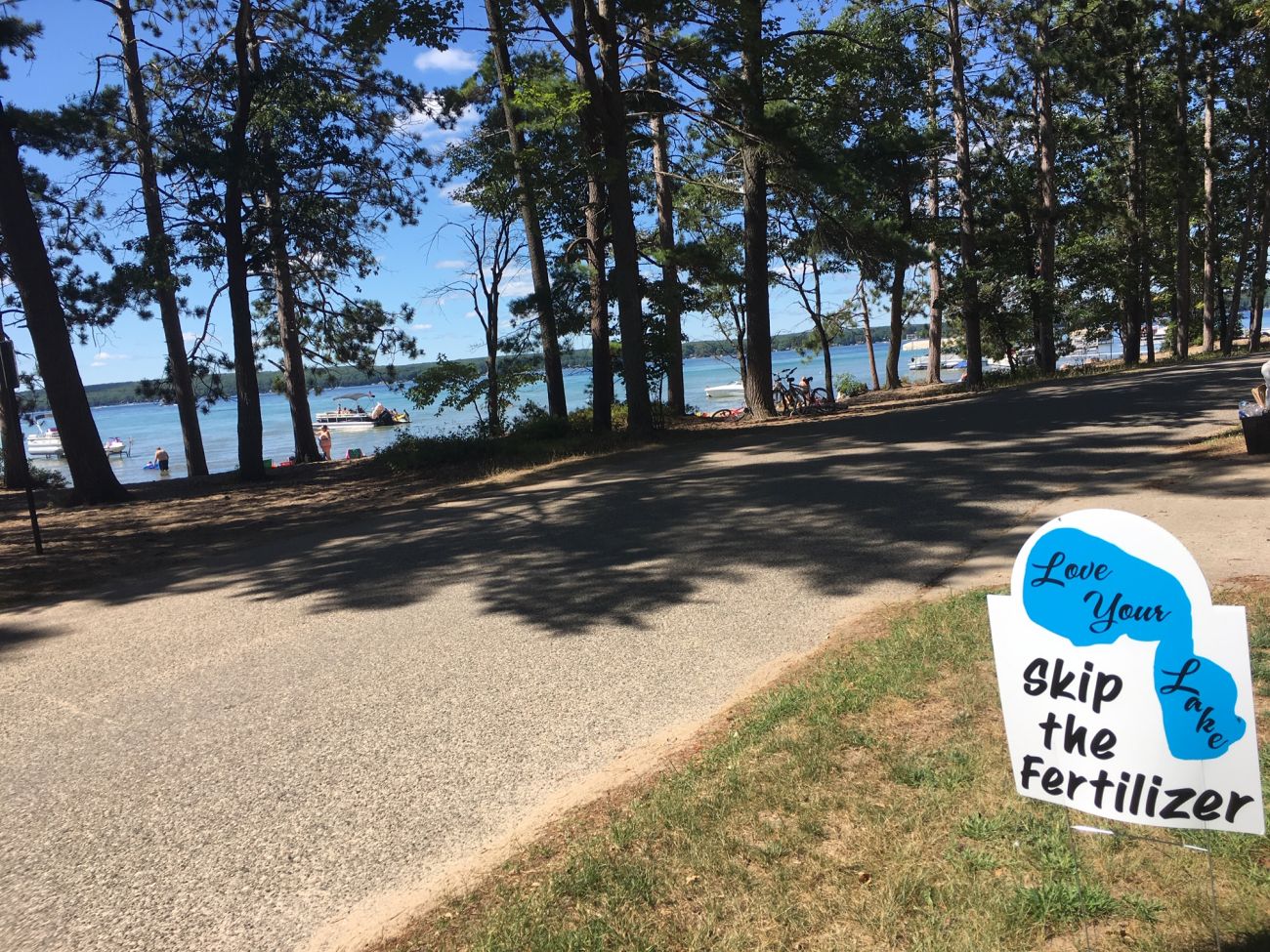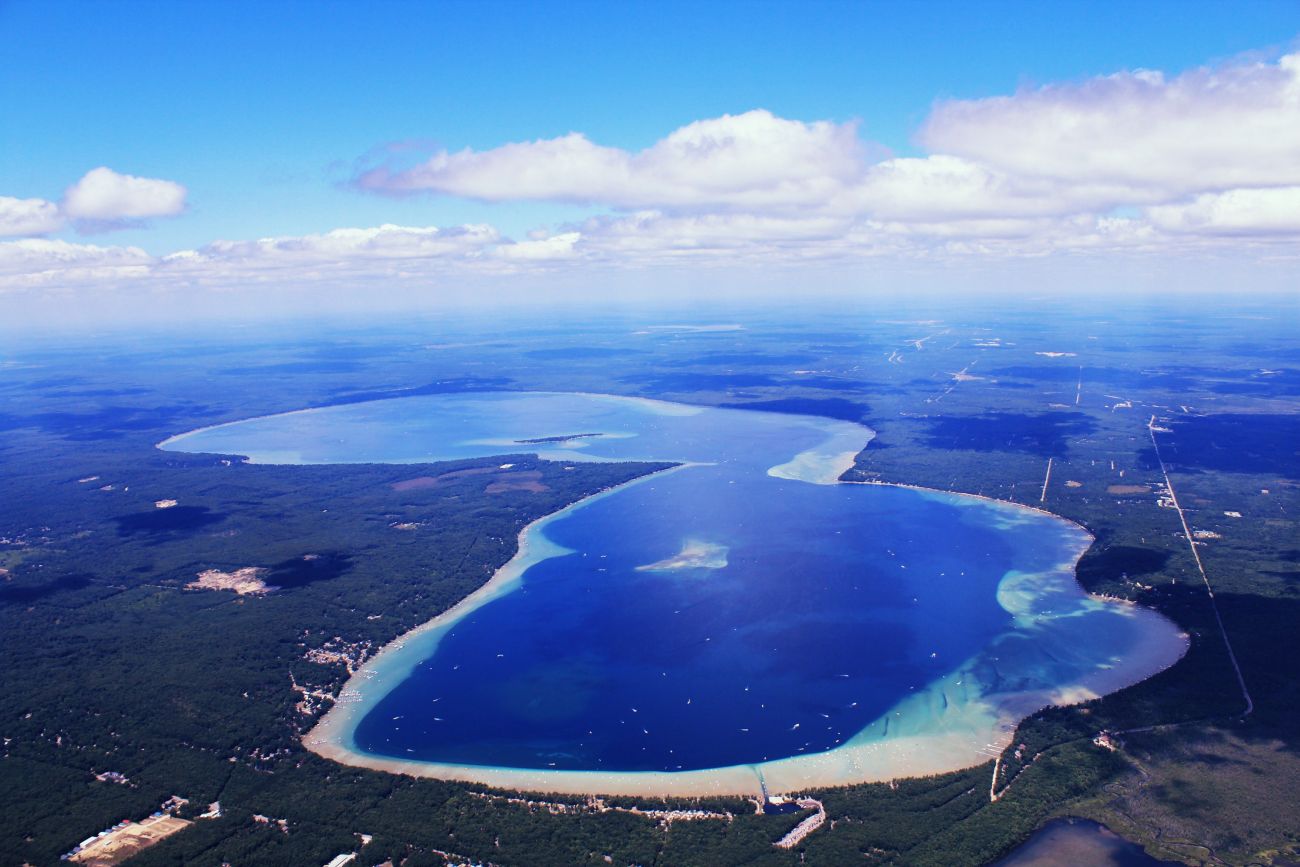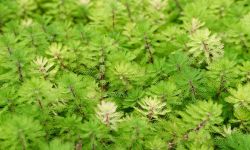Higgins Lake’s crystal waters are under threat. Blame poop (and other stuff)

ROSCOMMON – Venture onto Higgins Lake and it’s easy to see why it’s one of Michigan’s most beloved, with its clear waters and sandy bottom.
But trouble lurks in the depths of Michigan’s 11th largest inland lake, where the crystal waters abruptly turn turquoise. More than 100 feet below the surface, decades of lawn fertilizer, septic remnants and road runoff have created a nutrient-rich stew that is beginning to choke the lake and provide a breeding ground for algae that has made a mess of Lake Erie.
“You look at Higgins and it’s like the Caribbean. It seems like a spectacular ecosystem, and it is,” said Mark Luttenton, a biology professor at Grand Valley State University who has tested algae in the lake for five years.
“But we are seeing trends that gradually Higgins is moving toward a system that could be really affected by [human] activity.”
He and other scientists have studied Higgins, just west of Roscommon, for years and say similar problems are brewing in northern Michigan’s so-called oligotrophic lakes – ones formed by glaciers and cherished by vacationers for their clear waters.
They’re clear because such lakes contain relatively few plants, but that’s changing with an influx of nutrients from lawn fertilizer and septic systems. The nutrients breed algae, which muddy the waters, reduce the amount of oxygen in lake depths and lead to nuisances such as swimmer’s itch.
“If we keep adding nutrients like phosphate and nitrogen into the lakes, it all stays in the lakes and it’s just a matter of time,” Luttenton said. “The way to stop this and perhaps reverse it is to reduce or eliminate any [pollution]. The sooner they start, the better.”

This summer, signs began popping up next to cottages and summer homes that surround the 9,900-acre lake reading, “Love Your Lake: Skip the Fertilizer.”
The signs, which encourage homeowners to stop using nitrate-rich fertilizer on their lawns because it seeps into the lake, were funded by the Higgins Lake Foundation. The nonprofit also has sponsored research into the water quality of the lake and funded two boat washes to stem the spread of invasive species. In recent years, divers have detected zebra mussels and vegetation-suffocating plants such as Eurasian watermilfoil and the starry stonewart in the lake.
“The (signs) are one of many attempts to get people to take individual responsibility and do what they can do because bit by bit, chunk by chunk, we are beating up our lakes,” said Vicki Springstead, chairwoman of the Higgins Lake Foundation.
No doubt, reducing fertilizer will help, especially if conservation efforts prompt residents to think about their role in their environment, said David Hyndman, a professor of hydrogeology and chairman of Michigan State University’s Department of Earth and Environmental Sciences.
But the biggest impact in reducing algae would be for surrounding communities to switch from septic to sewer systems, he said. Northern Michigan lakes are highly unlikely to experience algae trouble on the scale of Lake Erie – which is covered by a bloom or sheen of algae that is eight times the size of Cleveland – but research has shown that waste from septic systems increasingly is making its way into lakes and rivers, Hyndman said.
“Switching to sewers is a long-term good investment for the water quality of these lakes,” he said.
Statewide, 1 in 3 homes rely on septic systems, which have led to elevated fecal bacteria in 64 Michigan watersheds, according a 2015 Michigan State University study published in the Proceedings of the National Academy of Sciences.
More than 130,000 septic systems are believed to be failing in Michigan, one of the only states without uniform septic codes, despite several efforts at reform.

But sewers are expensive, and there’s no consensus Higgins Lake residents and cottagers would fund such an investment, said Craig Williams, treasurer of Lyon Township that abuts the lake. His community and another township, Gerrish, commissioned a feasibility study into a wastewater and treatment system last year but it isn’t complete.
“This would be huge, and it’s a long process,” Williams said. “Some people say we need (sewers). Some say we don’t need it. There are two sides to every story, so we’re just going to complete the study and see what happens.”
He said “influential lake-fronters” began advocating for a sewer system after one was completed about 10 years ago to serve Camp Curnalia, a community of military veterans off the northwest corner of the lake.
The system cost about $6 million and costs 405 cottage owners about $700 per year in fees. The wastewater system covers about 64 acres.
Gerrish and Lyon townships, in contrast, have nearly 7,000 homes and cottages spread over 72 square miles, or 47,000 acres.
More northern communities could face similar decisions in coming years if they want to keep lakes pristine, according to the MSU study.
Springstead, whose family has owned property around the lake for generations, supports the sewer system. She said her foundation has been going strong and advocating for the lake for 30 years because members keep in mind a phrase from one of its first big donors.
“If someone took Higgins Lake from you, how much would you pay to get it back?” Springstead said, recalling the words of a woman who gave the group $10,000 at its first meeting.
“This is a battle,” Springstead said. “Michigan really needs to step it up.”
Michigan Environment Watch
Michigan Environment Watch examines how public policy, industry, and other factors interact with the state’s trove of natural resources.
- See full coverage
- Subscribe
- Share tips and questions with Bridge environment reporter Kelly House
Michigan Environment Watch is made possible by generous financial support from:
Our generous Environment Watch underwriters encourage Bridge Michigan readers to also support civic journalism by becoming Bridge members. Please consider joining today.
See what new members are saying about why they donated to Bridge Michigan:
- “In order for this information to be accurate and unbiased it must be underwritten by its readers, not by special interests.” - Larry S.
- “Not many other media sources report on the topics Bridge does.” - Susan B.
- “Your journalism is outstanding and rare these days.” - Mark S.
If you want to ensure the future of nonpartisan, nonprofit Michigan journalism, please become a member today. You, too, will be asked why you donated and maybe we'll feature your quote next time!






